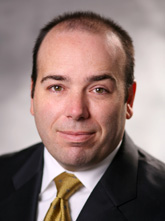
Dave Lester dreams of the day when Americans begin to appreciate the value of clean air inside their vehicles.

Europeans – and to a lesser extent Asian consumers – already understand the need for cabin air filters (CAFs) in their passenger compartments and generally demand them on everything from entry-level subcompacts to luxury cars.
As a result, about 95% of new vehicles in Europe are sold with CAFs, compared with 80% in Asia, estimates Lester, general manager-automotive for MicronAir Filtration, a division of Freudenberg Nonwovens Filtration Div.
Meanwhile, in the U.S., CAFs appear in about 40% of new vehicles, most of them Asian or European brands, although a few have been available on Detroit models for more than a decade, Lester says.
In a region where diesels are the powertrain of choice, concerns about soot is a key driver for European interest in CAFs, which sift out pollutants as outside air is drawn into the vehicle’s heating, ventilation and air-conditioning (HVAC) system. “Everyone in Europe goes to replace their cabin air filters once or twice a year,” Lester says.
In the U.S. however, consumers – and even car enthusiasts – know little about the devices, and dealers do a poor job educating customers about them, Lester says. As a result, dealers are missing a great opportunity to bolster their bottom lines by selling and installing replacement filters for vehicles equipped with CAFs.
Lester says he is upbeat about prospects for additional sales in the U.S. “I’m seeing positive developments in here,” he says. “There is renewed interest.”

It is too simplistic to say U.S.-based auto makers leave cabin air filters off of new-vehicle programs purely as a way to keep costs down. For proof, Lester points to certain entry-level small cars equipped with CAFs, while expensive fullsize SUVs from the same auto maker go without.
The old Ford Taurus, for example, had a CAF from 1996 until vehicle production ended last year, but the new Five Hundred sedan (now renamed the new Taurus) does not.
Lester says he spoke with Ford about sourcing for the Five Hundred program. “The company’s response was, ‘Why should we put it on the car if the consumer doesn’t know about it?’” he says. Despite these inconsistencies, Lester says MicronAir had its best year in 2006, when aftermarket CAF sales jumped 28% in North America and OEM sales rose 5%. The company’s plant in Hopkinsville, KY, produced 8 million CAFs last year.
MicronAir claims to lead the sector for CAFs in North America, with more than 60% of the OEM market and 40% of the aftermarket. New vehicles equipped with MicronAir filters include the Nissan Altima and Sentra and the upcoming Saturn Vue.
Although volumes are potentially higher on the OEM side of the fence, Lester says the more important sector is the aftermarket, where there is potential to educate consumers about the benefits of clean cabin air.
“That is where we really need to get the message out about cabin air filters,” he says. “You’re much closer to the consumer.”
Plus, profits are higher in the aftermarket. MicronAir’s biggest customer is not an auto maker but Robert Bosch GmbH, which sells replacement filters under the Bosch brand.
Research has shown cabin air contains six times more contaminants than outside air, Lester says.
CAFs first arrived in 1996 as a 3-layer, non-woven, particle filter designed to capture road soot, dust, pollen and allergens before they reach the cabin.
Today, auto makers have the option of choosing combination filters that add a layer of carbon to trap unpleasant odors entering through the HVAC air stream, such as the smell of manure, as well as others inside.

The problem with combination filters is they generally are at least twice as expensive as simple particle CAFs. Retailers often sell particle filters on the aftermarket for $15, compared with $30 for combination filters, Lester says.
The Chrysler 300 sedan had a carbon-based CAF on board when it was introduced in ’05. Last year, however, Chrysler switched to the less expensive particle filter, Lester says.
The location of the CAF within vehicles also is changing. Initially, the device was placed near the cowling, just below the windshield, where fresh air is drawn into the HVAC system.
Today, the device is moving deeper into the engine bay, closer to the blower motor, so it can be part of the system that recirculates air within the cabin, he says.
Lester is contemplating an educational marketing campaign, along the lines of the successful “Got Milk?” Toyota Motor Corp.’s Lexus luxury division already has used TV commercials playing up the benefits of CAFs on its vehicles.
Lester encourages motorists to change their CAFs every 10,000 to 12,000 (16,093 to 19,311 km) miles. A clogged filter that goes unchanged for years can impede air flow inside the vehicle, hampering the ability to defrost windows, he says.


